
SQUAW-ALPINE BASE-TO-BASE GONDOLA UPDATE:
updated on August 4th, 2017
- 8-passenger gondola
- Large spaces between cars
- 1,400 persons per hour (half the rate of a typical six-pack chairlift)
- From Squaw Valley base to Alpine Meadows base
- Squaw segment would allow skiers to exit at top of KT or continue to Alpine Meadows
- Squaw segment could operate when wind closes upper mountain which would aliviate KT and Red Dog lift lines even if the gondola can’t continue on to Alpine Meadows.
- New Red Dog lift is planned, but can’t be installed until final alignment of gondola is finalized
- Environmental experts are currently performing evaluation reports for the Federal and State Environmental Acts which should be completed by late Fall 2017
- NO ACCESS will be allowed into White Wolf ski are (the zone between Squaw & Alpine)
even more info:
- Squaw Valley Alpine Meadows, CA Base-to-Base Gondola Update: Andy Wirth & Troy Caldwell Hold Meeting

BASE-TO-BASE GONDOLA FAQ:
by Squaw Valley
What is the purpose of the Base-to-Base Gondola?
The Base-to-Base Gondola is intended to provide a connection between Alpine Meadows and Squaw Valley, so that skiers can take advantage of the offerings and terrain at both mountains without traveling by vehicle between the two areas.
What are the project benefits?
The proposed gondola would provide an exciting new dimension for guests at Squaw Valley Alpine Meadows with convenient and scenic lift service between the two mountains, offering access to terrain for all ability levels at both mountains. The Gondola will allow Squaw Valley Alpine Meadows Ski & Snowboard School programs to utilize both mountains in the same day, enhancing the product offering for guests.
Based on survey and other data, it is estimated that the proposed Gondola could reduce daily traffic volumes by approximately 100 vehicles along Highway 89 (between Squaw and Alpine) as well as on Squaw Valley Road.
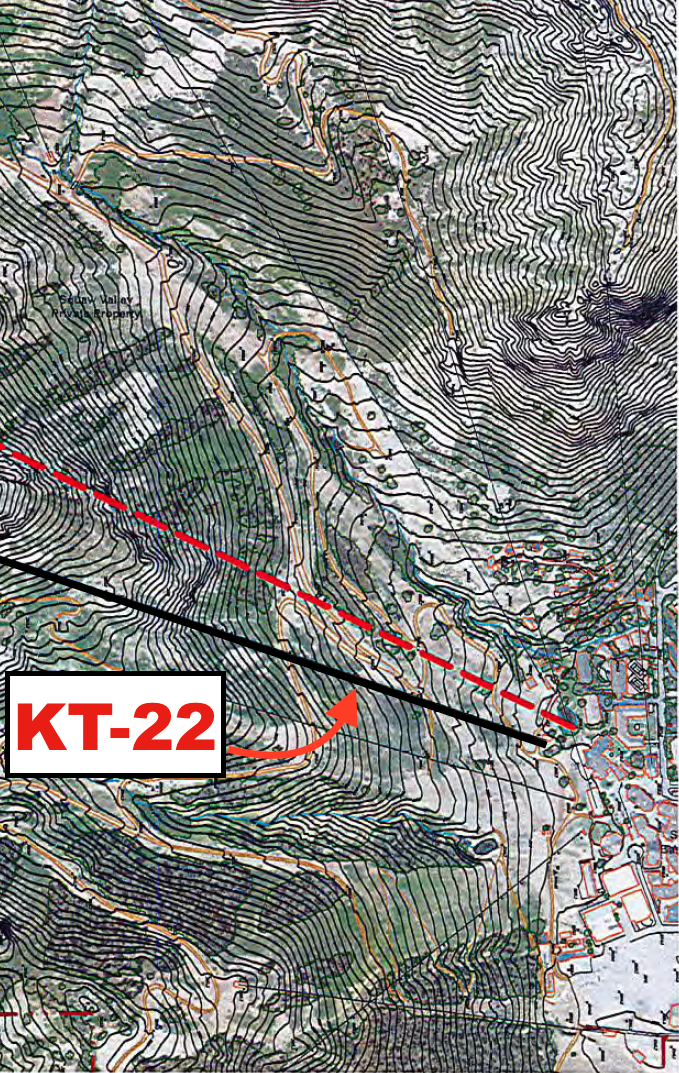
Where will it be located?
The project site is located in the Sierra Nevada mountain range, in Placer County. The Gondola would extend from the base of Alpine Meadows Ski Area to the base of Squaw Valley Resort. The portion of the project within Alpine Meadows would be located at Alpine Meadows Ski Area which operates under a Special Use Permit on the Tahoe National Forest. The project will be subject to review and permitting under the National Environmental Policy Act (NEPA) and the California Environmental Quality Act (CEQA). The portion of the gondola on the Squaw Valley side would be located on private lands owned or leased by Squaw Valley Ski Holdings, including land owned by Troy Caldwell, with whom Squaw Valley has arranged an agreement to operate the gondola in winter months.
Will the Base-to-Base Gondola be located on wilderness area?
No, the Base-to-Base Gondola will be located on area leased or owned by Squaw Valley Ski Holdings.
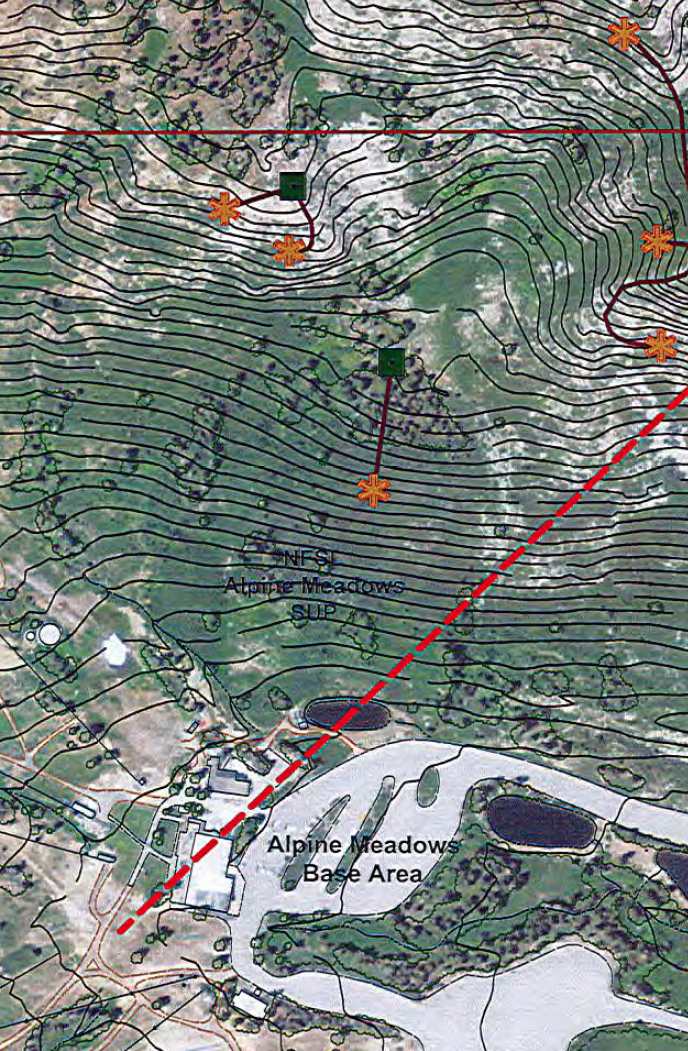
When is the estimated completion planned, and when will the gondola open to the public?
Applications for the project have been submitted to Placer County and US Forest Service and are pending approval—at this time an approval date has not been specified. Once approved, the Base-to-Base Gondola will take approximately 10 months to construct.
What are the specifics of the Gondola?
It will be an eight-passenger gondola with a design capacity of approximately 1,400 people per hour in both directions. In total, the gondola will be about 13,000 feet in length. There will be two base terminals and two mid-station terminals, connected by approximately 37 lift towers. It will take approximately 13-16 minutes to take the gondola from one base terminal to the other.

Where will the four gondola terminals be located?
The Alpine base terminal will be located on National Forest Service Land (NSFL) and situated to the southwest of the Alpine Meadows base lodge. The Squaw Valley base terminal would be located on private lands between the bottom terminals of the KT-22 and Squaw One express lifts. The Gondola is designed with two mid-stations: one on private lands atop the Saddle trail ridgeline approximately 1,100 feet southwest of the KT-22 express top terminal, on the left side of the Saddle run just beyond the Dead Tree run, and the other located on NFSL about 650 feet north-northwest of The Buttress in the northern portion of the Alpine Meadows special use permit area.
What kind of access will guests have from the four gondola terminals?
Guests will be able to load and unload at the Squaw Valley base terminal, the KT-22 ridge terminal and the Alpine Meadows base terminal. Guests disembarking at the Saddle mid-station near the KT-22 Express top terminal on the Squaw Valley side will be able to ski or snowboard down to Squaw Valley.
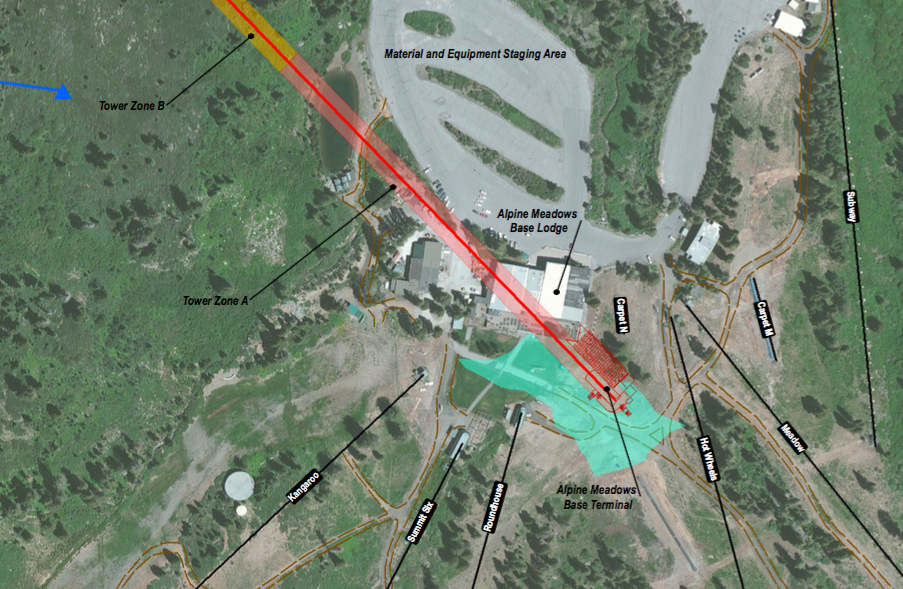
Will the Base-to-Base Gondola operate year round?
No, it will only operate during ski and snowboard season. The gondola cabins will be removed from the gondola cable after it closes operations for the season in order to reduce impacts on the surrounding view shed.
What is the official name for the Base-to-Base Gondola?
A name has not yet been finalized.
Will lift tickets and/or season passes prices increase?
There are no plans to increase prices based on this access. The gondola would simply make it easy for skiers and riders to explore both mountains with a single lift ticket or season pass, without needing to travel between the two by car.
Will skiers and riders have access to White Wolf?
There are no plans currently being contemplated to allow skiing or other non-skiing activities along the lift route or on the White Wolf terrain, privately owned by Troy Caldwell.
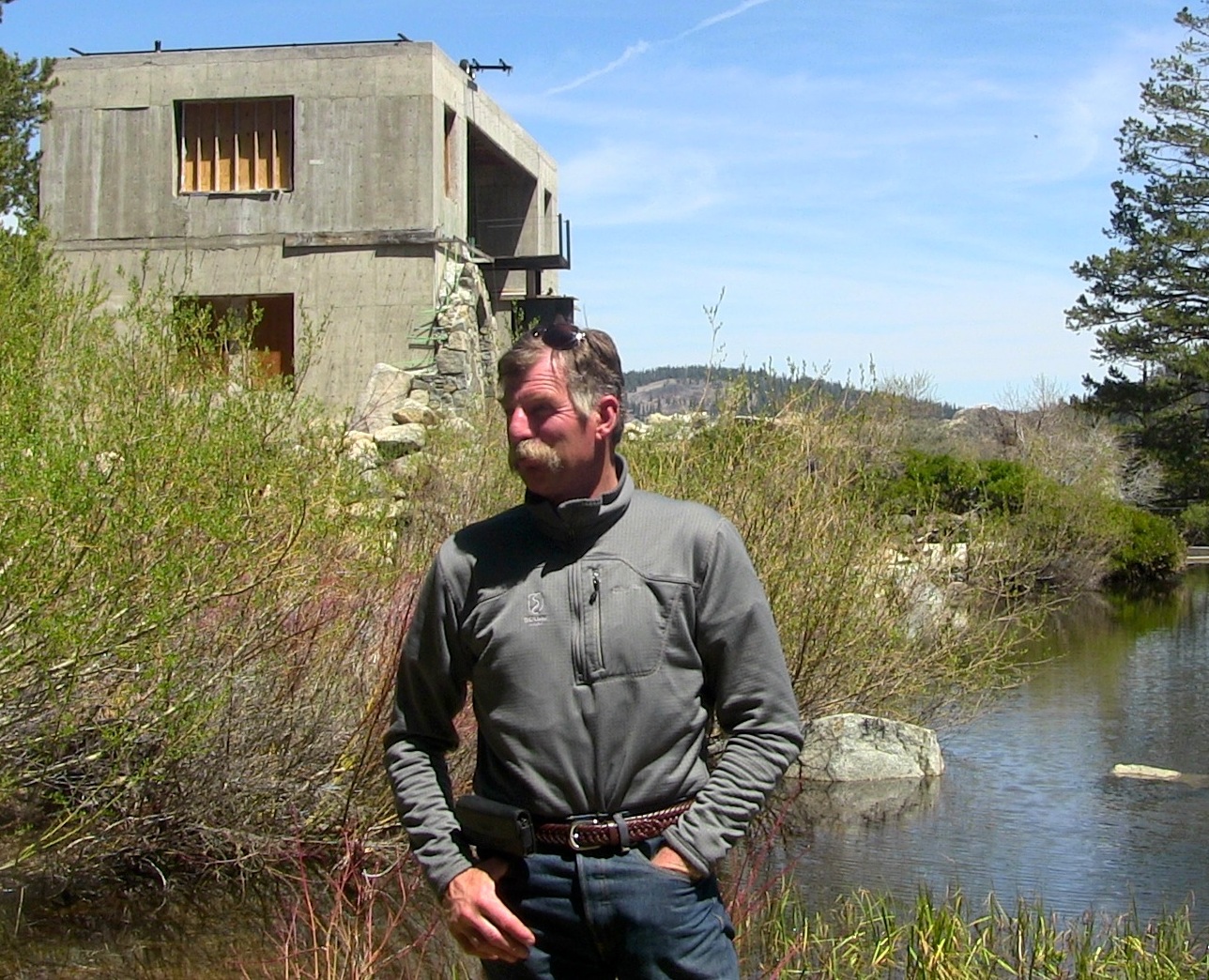
Will any existing skiable terrain be reduced during or after construction?
No. Existing skiable areas of Squaw Valley Alpine Meadows will not be affected by the gondola construction.
Will Squaw Valley Alpine Meadows continue to operate the shuttle bus between the two mountains?
Yes. Shuttles will continue to operate in order to provide transportation during ski season when the gondola is not running. Shuttles may also continue to operate during ski season in order to provide another alternative for transportation between Alpine Meadows and Squaw Valley. The planning process will include the completion of a traffic study to help determine the frequency and schedule of shuttles.
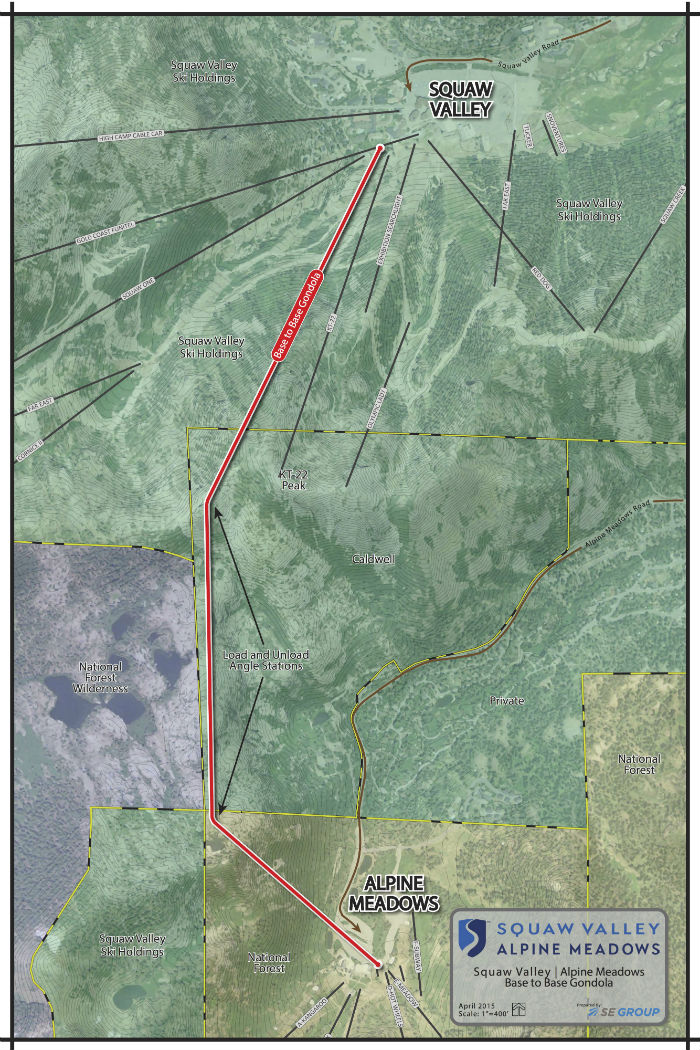
What environmental considerations are being taken into account with this project?
Squaw Valley Ski Holdings and Troy Caldwell have worked extensively with the mountain planners at SE Group to design a gondola that ensures stewardship of the high alpine environment whose natural beauty is integral to the overall Squaw Valley | Alpine Meadows experience. The project will be subject to review and permitting under the National Environmental Policy Act (NEPA) and the California Environmental Quality Act (CEQA). The planned Base-to-Base Gondola will be carefully designed to minimize the overall footprint and potential visual impacts to the adjacent Granite Chief Wilderness, as well as maintain the scenic beauty of the area.
To accomplish this, design elements include locating the gondola as far from the Wilderness boundary as possible given the rugged terrain, minimizing the number of lift towers and diminishing the need to construct access roads. The Gondola capacity is intentionally planned to be relatively low at 1,400 people per hour (a typical high speed lift transports at least 2,000 people per hour) in order to minimize the number and height of lift towers. In addition, the gondola would utilize an innovative power generation system to supply necessary electricity to the two lift mid-stations thereby avoiding the need to install above or below ground electrical power. The result of these efforts would significantly reduce necessary timber removal and vegetation clearing for construction, and would minimize impacts on watershed, soils and natural resources throughout the planned lift corridor.
Recognizing the visual sensitivity of the surrounding area – particularly the adjacent Granite Chief Wilderness, measures will be implemented to minimize the potential for adverse visual impacts from the perspective of design, materials and equipment selection, and operational practices. Specifically, materials and equipment for the gondola would be selected using blending coloration and low reflectivity. The gondola would also be designed to allow the cabins to be completely removed from the line during non-operational periods.
In addition, it is anticipated that the operation of the gondola would substantially reduce guest vehicular traffic between the two resorts, leading to a reduction in overall vehicle emissions.
What about avalanche control around the Base-to-Base Gondola?
As part of the Base-to-Base gondola project, Gazex Inertia Exploders would be required in zones at Alpine Meadows that traditionally require hand charges or artillery for avalanche mitigation, in order to eliminate the hazard of direct artillery or indirect shrapnel impacting the lift. The Gazex Inertia Exploder is a remotely controlled avalanche mitigation system that uses compressed gas to create a concussive blast, triggering controlled avalanches before they become a hazard. Four gas shelters and eight exploders are incorporated into the current project plan for the Base-to-Base gondola.
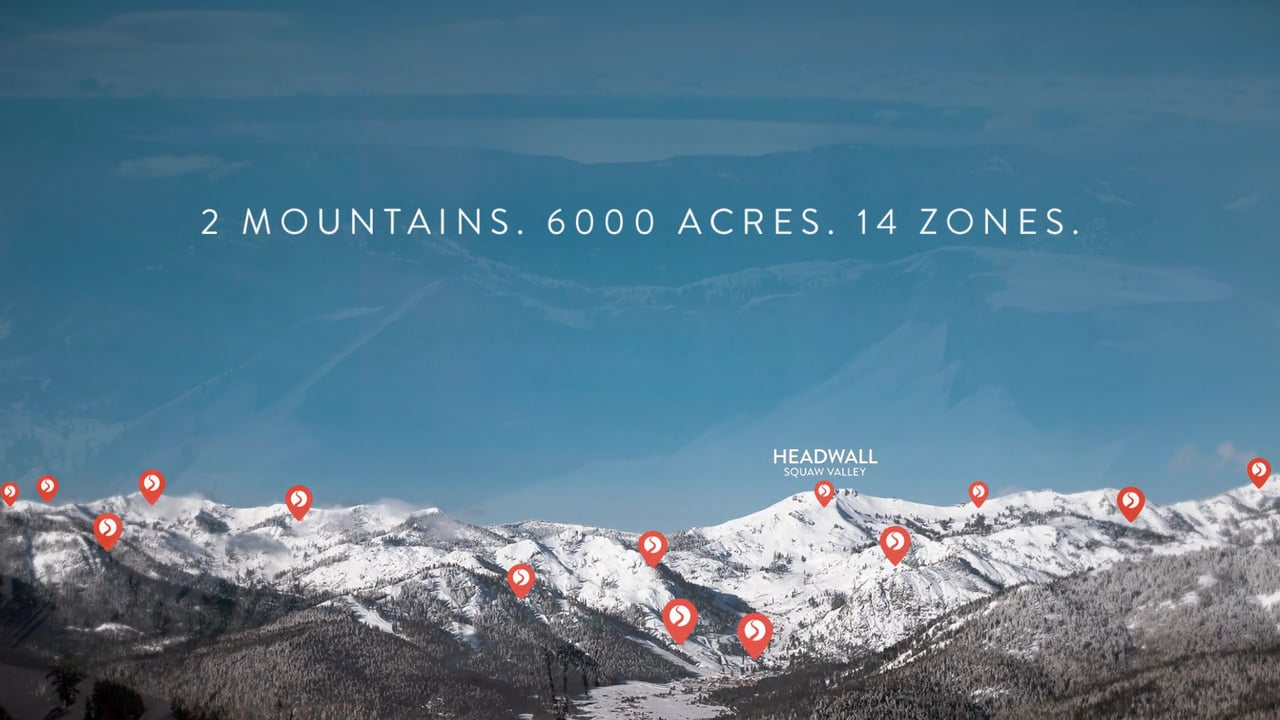
Is anyone dumb enough to believe that the KT side of the gondola would run when winds shut the upper mtn down? The gondola is on the wrong side of the KT ridge for a windbreak–running it through the west faces would expose the gondola to more wind, thus shutting it down sooner, than the chairlift, which was designed to be protected from wind by being placed behind the ridge (i.e. the ridge from the patrol shack to the nose). Not to mention that gondolas have a much larger surface area than chairs, further lowering the threshold for when it could be run. Once again Squaw makes a bogus claim that sounds good and hopes that no one critically examines what they have to say.
Shouldn’t an article that purports to have the answer to “all” of the questions I might have about the project at least mention the possible negative impacts? Squaw (who I assume is paying for this) has clearly outlined the benefits, but shouldn’t that mean that we should have a counter argument? Nothing like this can be singularly beneficial to skiers/residents/environment. Even something as great as eating cake has a downside. Let’s not kid ourselves here. I have many, many, more questions that remain unanswered.
I was all for this idea back when it seemed like the general public would be able to actually SKI from Squaw to Alpine. Without that, what’s the point? Squaw Valley and Alpine Meadows likely would’ve been truly connected ski-wise years and years ago if not for Troy Caldwell sneakily buying the land out from under Alex/Ski Corp back in 1990. Seriously, why will White Wolf/KT South only be open to a few super wealthy people instead of everyone? Tahoe really doesn’t need a mini-Yellowstone Club in between Squaw and Alpine.